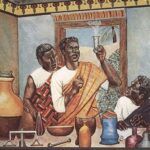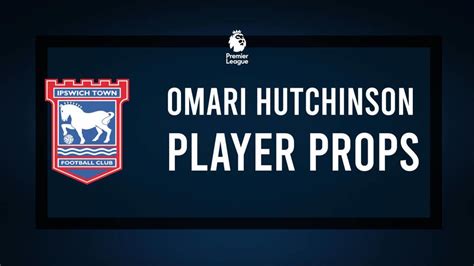
Clyde Drexler believes NBA players, not media members, should determine Hall of Fame inductees, arguing that players possess a more profound understanding of on-court contributions and impact.
Hall of Famer Clyde Drexler has reignited the debate over who should decide which players are enshrined in the Naismith Memorial Basketball Hall of Fame, asserting that current and former NBA players are better qualified than media members to make those crucial selections. Drexler, speaking on a recent podcast, voiced his strong opinion that the Hall of Fame voting process needs a significant overhaul, advocating for a system that prioritizes the insights and expertise of those who have actually played the game at its highest level.
“I don’t think the media should be voting for the Hall of Fame,” Drexler stated unequivocally. “It should be the players.”
Drexler’s stance centers on the belief that players have a unique and invaluable perspective on the game that journalists, analysts, and other media personnel simply cannot replicate. He argues that players possess a deeper understanding of the nuances of the game, the challenges faced on the court, and the true impact that a player has on their team and the league as a whole. This understanding, according to Drexler, is essential for accurately assessing a player’s Hall of Fame worthiness.
“Who knows more about basketball, the players or the media? It’s not even close,” Drexler asserted. He emphasized that while media members can provide valuable commentary and analysis, they often lack the firsthand experience and intimate knowledge of the game that players possess. This lack of firsthand experience, Drexler suggests, can lead to biases and inaccurate evaluations in the Hall of Fame voting process.
The current Hall of Fame selection process involves several layers of committees and voting panels. Nominees are initially screened by direct elect committees, which focus on specific categories such as North American and international players, coaches, and contributors. Those who pass through the direct elect committees are then considered by the Honors Committee, a 24-member body responsible for the final selection. To be elected, a nominee must receive at least 18 votes (75%) from the Honors Committee.
While the Honors Committee does include former players, coaches, and executives, media members also hold a significant number of seats, giving them considerable influence in the selection process. It is this influence that Drexler is challenging, arguing that the balance of power should shift decisively in favor of those who have played the game.
Drexler’s comments come at a time when the Hall of Fame selection process is already under scrutiny. In recent years, there have been growing calls for greater transparency and accountability in the voting process, as well as concerns about the criteria used to evaluate potential inductees. Some critics have argued that the Hall of Fame has become too inclusive, inducting players who, while accomplished, may not have reached the level of true greatness that should be required for enshrinement.
Drexler’s proposal to give players a greater role in the Hall of Fame voting process is likely to spark further debate and discussion about the future of the institution. While it is unclear whether his proposal will gain traction, it raises important questions about who is best qualified to judge the legacies of NBA players and what criteria should be used to determine Hall of Fame eligibility.
Arguments for Player-Driven Selection:
Drexler’s argument for a player-driven Hall of Fame selection process rests on several key points:
- In-depth Understanding of the Game: Players possess an intimate understanding of the nuances of the game that media members often lack. They know what it takes to succeed at the highest level, the challenges players face on the court, and the subtle contributions that may not be apparent to casual observers.
- Firsthand Experience: Players have firsthand experience playing against and alongside potential Hall of Fame inductees. This experience gives them a unique perspective on a player’s strengths, weaknesses, and overall impact on the game.
- Peer Recognition: Enshrinement in the Hall of Fame is, in many ways, a form of peer recognition. Having players make the final decisions ensures that inductees are truly respected and admired by their fellow professionals.
- Reduced Bias: While players may still have biases, they are likely to be different from those of media members. Players may be more likely to value on-court performance and contributions to winning, while media members may be more influenced by narratives and public perception.
- Protecting the Integrity of the Hall of Fame: By entrusting the selection process to those who have played the game, the Hall of Fame can ensure that it remains a true reflection of basketball excellence and that only the most deserving players are enshrined.
Potential Challenges and Considerations:
While Drexler’s proposal has merit, it also raises several potential challenges and considerations:
- Defining “Player”: Who qualifies as a “player” for voting purposes? Would it include only former NBA players, or would WNBA players, international players, and players from other leagues also be included? Establishing clear criteria for who is eligible to vote would be essential.
- Potential for Bias: While players may have different biases than media members, they are not immune to bias altogether. Personal relationships, rivalries, and other factors could influence their voting decisions.
- Ensuring Objectivity: How can the Hall of Fame ensure that players are voting objectively and not simply based on personal preferences? Establishing guidelines and oversight mechanisms would be necessary.
- Representation: How can the Hall of Fame ensure that all eras and positions are adequately represented in the voting process? Steps may need to be taken to ensure that players from different generations and playing styles have a voice.
- Logistical Challenges: Implementing a player-driven voting system would present logistical challenges. How would the Hall of Fame identify and contact eligible voters? How would they ensure that all voters are informed and engaged in the process?
Alternative Approaches:
While Drexler advocates for a complete shift in power to players, other approaches could also be considered:
- Increased Player Representation on the Honors Committee: The Hall of Fame could increase the number of former players on the Honors Committee, giving them a greater voice in the selection process without completely excluding media members.
- Establishment of a Player Advisory Panel: The Hall of Fame could establish a panel of former players to advise the Honors Committee on player evaluations. This panel could provide valuable insights and perspectives that would inform the voting process.
- Transparency in the Voting Process: The Hall of Fame could increase transparency in the voting process by releasing more information about how individual committee members voted. This would allow for greater scrutiny and accountability.
- Revised Selection Criteria: The Hall of Fame could revise its selection criteria to place greater emphasis on on-court performance and contributions to winning. This would help to ensure that only the most deserving players are inducted.
The Broader Context of Hall of Fame Debates:
The debate over who should be in the Hall of Fame is a perennial topic of discussion among basketball fans and analysts. Every year, deserving players are left out, while others are inducted amid controversy. This is due, in part, to the subjective nature of evaluating a player’s career. There is no single, objective standard for determining Hall of Fame worthiness. Factors such as statistics, championships, individual awards, impact on the game, and legacy all play a role.
The debate over who should be in the Hall of Fame also reflects broader discussions about the history of the NBA and the evolution of the game. As the game changes, so too do the criteria for evaluating players. What was once considered a Hall of Fame-worthy career in the 1960s or 1970s may not be enough to merit enshrinement today.
Drexler’s comments are a reminder that the Hall of Fame is not a static institution. It is a living, breathing entity that is constantly evolving and adapting to the changing landscape of the NBA. The debate over who should be in the Hall of Fame is an important part of that process, and it is essential that all voices are heard.
Impact on Current and Future Candidates:
Drexler’s proposal, if implemented, could significantly impact the chances of current and future Hall of Fame candidates. Players who are highly regarded by their peers but may not have received as much media attention could benefit from a player-driven voting system. Conversely, players who are popular with the media but may not have been as respected by their fellow players could see their chances of enshrinement diminished.
Ultimately, the question of who should decide the Hall of Fame inductees is a complex one with no easy answer. There are valid arguments to be made on both sides of the issue. However, Drexler’s comments have sparked an important conversation about the future of the Hall of Fame and the need to ensure that it remains a true reflection of basketball excellence. The debate is ongoing, and it is likely to continue for many years to come. The potential shift to a player-centric selection process underscores the need to re-evaluate historical contributions and future selections through a different lens, one that prioritizes the nuanced perspectives of those who have lived and breathed the game at its highest levels. This could lead to the re-examination of previously overlooked players and a recalibration of the standards used to assess greatness in the sport.
The Role of Advanced Statistics:
In recent years, advanced statistics have become increasingly important in evaluating NBA players. Metrics such as Player Efficiency Rating (PER), Win Shares, and Value Over Replacement Player (VORP) provide more comprehensive measures of a player’s contributions than traditional statistics like points, rebounds, and assists.
Some argue that advanced statistics should play a greater role in the Hall of Fame selection process. These metrics can help to identify players who may have been undervalued by traditional measures and provide a more objective assessment of their overall impact on the game. However, others argue that advanced statistics should not be the sole determinant of Hall of Fame worthiness. They believe that factors such as leadership, intangibles, and cultural impact are also important considerations.
If players were to become the primary voters for the Hall of Fame, it would be interesting to see how they incorporate advanced statistics into their evaluations. Some players may be more inclined to rely on their own observations and experiences, while others may be more open to using data to inform their decisions.
The Hall of Fame’s Mission and Purpose:
The Naismith Memorial Basketball Hall of Fame’s mission is to “honor and celebrate basketball’s greatest legends and to promote and preserve the game’s rich history.” The Hall of Fame serves as a repository of basketball history, preserving artifacts, documents, and stories from all eras of the game. It also provides educational programs and exhibits that promote the values of basketball, such as teamwork, sportsmanship, and leadership.
The debate over who should decide the Hall of Fame inductees is ultimately a debate about how best to fulfill the Hall of Fame’s mission. Should the Hall of Fame prioritize honoring players who were statistically dominant, or should it also consider factors such as cultural impact and legacy? Should the Hall of Fame be more inclusive, or should it maintain a stricter standard for enshrinement? These are all important questions that must be considered as the Hall of Fame evolves.
Drexler’s challenge to the existing selection process forces a vital reconsideration of these foundational aspects, prompting a deeper reflection on the true essence of basketball greatness and the most appropriate ways to recognize and celebrate it. It raises critical questions about the balance between statistical achievement, subjective impact, and the perspectives of those who have directly experienced the game at its highest levels.
Conclusion:
Clyde Drexler’s call for players to have a greater say in the Hall of Fame selection process is a bold proposal that has the potential to reshape the future of the institution. While there are challenges and considerations to be addressed, his argument that players possess a unique and invaluable perspective on the game is compelling. Whether or not his proposal is ultimately adopted, it has sparked an important conversation about the Hall of Fame’s mission, purpose, and selection criteria. The debate is ongoing, and it is likely to continue for many years to come. The resolution of this debate will have a profound impact on how basketball history is remembered and celebrated for generations to come. The Hall of Fame’s response to Drexler’s challenge will not only determine the future composition of its membership but also shape the very definition of basketball excellence in the eyes of fans, players, and historians alike.
Frequently Asked Questions (FAQ)
1. Why does Clyde Drexler think NBA players should decide Hall of Fame inductees?
Clyde Drexler believes players have a more profound understanding of the game, its nuances, and the true impact a player has on their team and the league, which media members might not fully grasp due to their lack of on-court experience. He feels players can better evaluate a player’s Hall of Fame worthiness based on firsthand knowledge and peer recognition.
2. What is the current Hall of Fame selection process?
The current process involves direct elect committees screening nominees, followed by the Honors Committee (a 24-member body) making the final selection. A nominee needs at least 18 votes (75%) from the Honors Committee to be elected. The committee includes former players, coaches, executives, and media members.
3. What are some potential challenges of having players as the primary voters?
Some potential challenges include: defining who qualifies as a “player” for voting purposes, addressing potential biases among player voters (personal relationships, rivalries), ensuring objectivity in voting, and ensuring representation of all eras and positions in the voting process, and overcoming logistical challenges in identifying and engaging eligible voters.
4. What are some alternative approaches to address Drexler’s concerns without completely excluding media members?
Alternative approaches include increasing player representation on the Honors Committee, establishing a player advisory panel to advise the Honors Committee, increasing transparency in the voting process by releasing more information about individual committee members’ votes, and revising selection criteria to place greater emphasis on on-court performance and contributions to winning.
5. How might a player-driven Hall of Fame selection process impact current and future candidates?
Players highly regarded by their peers but with less media attention could benefit. Conversely, players popular with the media but less respected by fellow players might see their chances diminished. Ultimately, it could lead to a re-evaluation of historical contributions and a different lens through which future selections are made, prioritizing the perspectives of those who have directly experienced the game at its highest levels.









